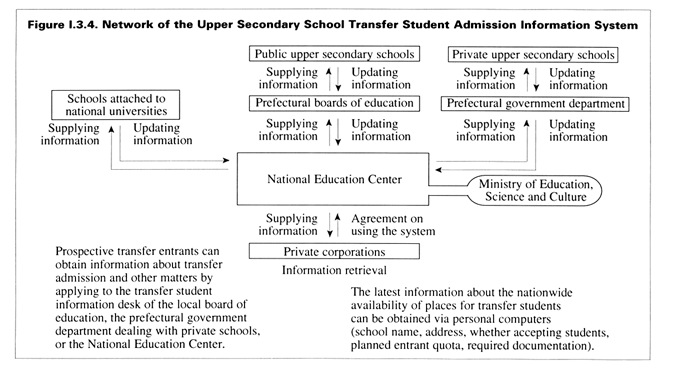| Home > Policy > White Paper, Notice, Announcement > White Paper > JAPANESE GOVERMENT POLICICIES IN EDUCATION, SCIENCE AND CULTURE 1994 > PART I Chapter 3 3 3 | ||
In recent years the growing geographical scope of economic activities and the trend toward internationalization have led to an increase in the number of parents who are transferred to other parts of Japan by their companies or who return to Japan after overseas postings. The difficulties that the children of these people encounter, including school transfer problems, have become a social issue.
This situation has become increasingly pronounced in recent years. Since 1984 the Ministry of Education, Science and Culture has repeatedly called on prefectural governments and other relevant organizations to consider such measures as the expansion of school entrance opportunities and the implementation of simpler and more flexible entrance examinations for transfer students and those in similar situations, the establishment of special entrant quotas, and the improvement of access to information. As a result of these efforts, most prefectures now base acceptance on scholastic tests in three subjects (Japanese language, mathematics, and foreign languages) instead of the usual five subjects and on interviews. The number of transfer students has increased from approximately 8,600 in fiscal 1989 to approximately 11,800 in fiscal 1991.
The Ministry has developed the Upper Secondary School Transfer Student Admission Information System, which links the National Education Center with prefectural boards of education and other organizations throughout Japan via a computer network. Information about transfer admission to upper secondary schools throughout Japan has been distributed through this system since February 1992. Prospective entrants can obtain a variety of information, including school profiles and entrant figures and an outline of entrance examinations for transfer students, by applying to the transfer student information center of a local board of education, the prefectural government department dealing with private schools, or the National Education Center. Information is also supplied to other organizations, including corporations ( Figure I.3.4 ).

| Back to Top | MEXT HOME |